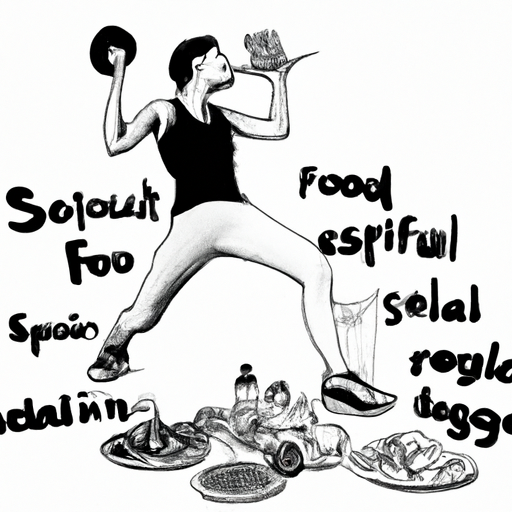- Your cart is empty
- Continue Shopping
Building Strong Bones: A Comprehensive Guide to Preventing Osteoporosis through Nutrition, Treatment, and Lifestyle Changes

Osteoporosis, a condition characterized by weak and brittle bones, affects millions of people worldwide. It is a silent disease that often goes unnoticed until a fracture occurs. However, with the right knowledge and lifestyle changes, it is possible to prevent and manage osteoporosis effectively. In this article, we will delve into the various aspects of osteoporosis, from its causes and symptoms to its diagnosis and treatment options. We will specifically focus on the role of a healthy diet in supporting bone health and preventing osteoporosis. Additionally, we will explore the use of supplements, medications, exercise, and lifestyle changes in treating and managing this condition. By the end, you will have a comprehensive understanding of how to optimize your nutrition, lifestyle, and healthcare choices to ensure strong and resilient bones.
1. "Understanding Osteoporosis: Causes, Symptoms, and Diagnosis"
Osteoporosis, a common bone disease, affects millions of people worldwide, particularly women over the age of 50. Understanding the causes, symptoms, and diagnosis of osteoporosis is crucial for its prevention and effective management.
Causes:
Osteoporosis occurs when the body fails to form enough new bone or when too much old bone is reabsorbed. Several factors contribute to the development of osteoporosis, including age, gender, genetics, hormonal changes, lack of physical activity, and poor nutrition. Women are at a higher risk due to the hormonal changes that occur during menopause, leading to a decline in estrogen levels, which helps maintain bone density. Additionally, individuals with a family history of osteoporosis, particularly those with a parent who experienced a hip fracture, are more prone to developing the condition.
Symptoms:
In the early stages, osteoporosis often goes unnoticed as it does not cause any pain or external symptoms. However, as the disease progresses, individuals may experience symptoms such as back pain, loss of height, stooped posture, and fractures, especially in the wrist, hip, or spine. It is important to note that fractures resulting from osteoporosis can occur even with minor falls or everyday activities that would not typically cause fractures.
Diagnosis:
Early diagnosis of osteoporosis is crucial to prevent complications and manage the condition effectively. A bone mineral density (BMD) test, commonly known as a DEXA scan, is the most common diagnostic tool. This non-invasive procedure measures the density of minerals, such as calcium, in specific bones, usually the hip and spine. The results are compared to the average peak bone density of a healthy young adult to determine the T-score, which indicates the level of bone loss. A T-score of -2.5 or lower confirms a diagnosis of osteoporosis.
In addition to the BMD test, healthcare providers may consider other risk factors, medical history, and physical examination to evaluate an individual’s overall bone health. It is essential for individuals at
2. "Optimal Nutrition for Strong Bones: Diet Recommendations and Supplements"
Optimal Nutrition for Strong Bones: Diet Recommendations and Supplements
Maintaining strong and healthy bones is essential to prevent osteoporosis, a condition characterized by weak and brittle bones. While factors such as genetics and age play a role in the development of osteoporosis, adopting a balanced and nutritious diet can significantly contribute to bone health. In this section, we will explore some dietary recommendations and supplements that can help support bone health and reduce the risk of osteoporosis.
Calcium, often associated with strong bones, is a vital nutrient for bone health. It is essential to consume an adequate amount of calcium-rich foods to ensure optimal bone density. Dairy products like milk, cheese, and yogurt are excellent sources of calcium. However, individuals who are lactose intolerant or follow a vegan diet can opt for fortified plant-based milk alternatives, such as almond or soy milk. Other non-dairy sources of calcium include leafy green vegetables like kale, broccoli, and bok choy, as well as fortified tofu and canned fish with bones, such as sardines.
Vitamin D is another crucial nutrient that aids in the absorption of calcium. It helps regulate calcium levels in the blood and plays a vital role in bone formation and remodeling. Exposure to sunlight is the primary source of vitamin D, but dietary sources also contribute to its intake. Fatty fish like salmon and mackerel, fortified dairy products, and egg yolks are good sources of vitamin D. However, it can be challenging to obtain sufficient vitamin D from diet alone, especially for individuals with limited sun exposure. In such cases, supplements may be recommended by healthcare professionals to ensure adequate levels of this vital nutrient.
Phosphorus, magnesium, and potassium are additional minerals that contribute to bone health. Phosphorus, found in abundance in dairy products, meat, and legumes, works alongside calcium to maintain bone strength. Magnesium, present in whole grains, nuts, and seeds, aids in the absorption of calcium and plays a role in bone metabolism. Potassium, abundant in fruits and vegetables
3. "Treating and Managing Osteoporosis: Medications, Exercise, and Lifestyle Changes"
Treating and Managing Osteoporosis: Medications, Exercise, and Lifestyle Changes
Osteoporosis is a debilitating condition characterized by low bone density and a higher risk of fractures. While diet plays a crucial role in supporting bone health and preventing osteoporosis, it is not the sole solution. Treating and managing osteoporosis requires a comprehensive approach that includes medications, exercise, and lifestyle changes.
Medications play a significant role in the treatment of osteoporosis, particularly for individuals with severe bone loss or those at high risk of fractures. The most commonly prescribed medications for osteoporosis are bisphosphonates, which work by slowing down bone breakdown and reducing the risk of fractures. These medications are often taken orally or through injections and are generally well-tolerated by most individuals. Other medications, such as selective estrogen receptor modulators (SERMs), hormone replacement therapy (HRT), and denosumab, may also be prescribed depending on the specific needs and medical history of the patient.
In addition to medications, regular exercise is crucial for managing osteoporosis. Weight-bearing exercises, such as walking, jogging, dancing, and resistance training, help stimulate bone growth and strengthen existing bones. These exercises help improve balance, coordination, and muscle strength, thereby reducing the risk of falls and fractures. It is essential to consult with a healthcare professional or a physical therapist to develop an exercise program tailored to individual needs and capabilities.
Lifestyle changes also play a vital role in the management of osteoporosis. Smoking and excessive alcohol consumption can weaken bones and increase the risk of fractures. Therefore, quitting smoking and limiting alcohol intake are important steps in maintaining bone health. Additionally, ensuring an adequate intake of calcium and vitamin D through diet or supplements is crucial for bone strength. Foods rich in calcium include dairy products, leafy greens, and fortified foods, while vitamin D can be obtained through sunlight exposure and dietary sources such as fatty fish, egg yolks, and fortified products.
Regular monitoring and follow-up with medical professionals are essential for individuals

